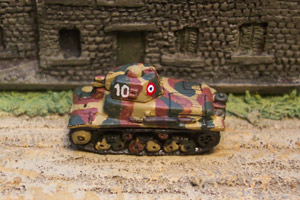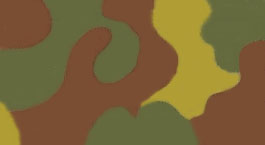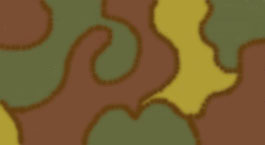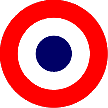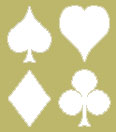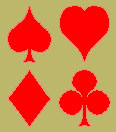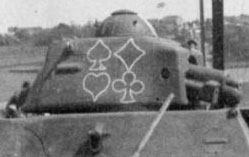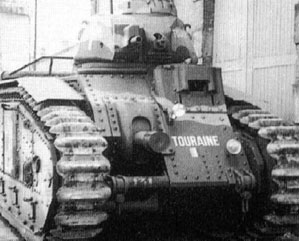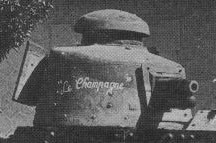|
Vehicle Camouflage and Markings
ColoursPre-war vehicles were painted in a dark green colour known as Army Green although some AFVs had camouflage added. Wartime vehicles were sometimes painted in a single overall colour but more often they were camouflaged two or three colours, AFVs always so. There were no standard patterns, camouflage was left to the imagination of the manufacturer or the unit. Patterns were often patches or layers. The meeting points of the different colours were sometimes outlined in a darker colour. The colours used were dark green (although in a slighty lighter shade than the pre-war green), brown (often slighty redish) and yellow ochre.
National MarkingsNational markings could take the form of the French flag or roundel. The flag could be placed on the vehicle's hull front, hull side and/or turret side. The roundel could be placed like the flag, but also on the turret top (usually on the commander's cupola) to help recognition from the air. In addition a small flag proceded the vehicle's registration number that was carried both front and back. Ace MarkingsA new system of tactical markings was introduced in 1939 to allow the recognition of which company and platoon a vehicle belonged. A single playing card symbol was painted on the vehicle, either on the turret or the side. Which platoon within a company was indicated by the choice of symbol in bridge sequence; 1st platoon a Spade, 2nd platoon a Heart, 3rd platoon a Diamond and fouth platoon a Club. Which company with the battalion was indicated by the choice of colour in national flag sequence; 1st company had blue, 2nd company had white, 3rd company had red. Company commanders had all four symbols Spade and Heart over Diamond and Club in the appropriate colour. The red and blue symbols were often outlined in white.
Vehicle NumbersLarge numbers were sometimes used to distinguish individual tanks. The number were painted on the turret sides, it's use being more frequent in the cavalry's regiments. The exact use of numbering seems to have differed between units. Tanks seem to have been numbered sequentially within the unit.
Vehicle NamesIndividual tank names were carried by most B1 and B1 bis tanks. Names on other types of tank were rare. The names were painted on some or all of the following: turret side, hull front and hull side. The names had often, but not always, a small French flag painted underneath them.
Arm of serviceFrom January 1940 most unarmoured vehicles displayed a 20 cm square sign on the left front (and sometimes left rear too) of the vehicle showing the arm of service it belonged to. This did not apply to tanks, although the cavalry sign could be seen on some armoured recconaissance vehicles. The signed whas white bearing the following
Towing signThe towing sign was a square containing a yellow triangle on a blue background.Vehicles towing a gun or trailer were required to display this sign at their front. This is often seen on artillery tractors and supply carriers. The sign should have been removed or covered when the vehicle was not towing.
|


